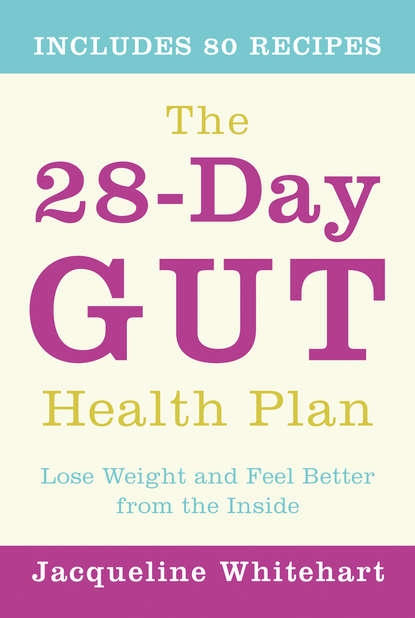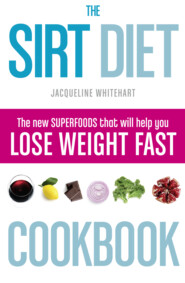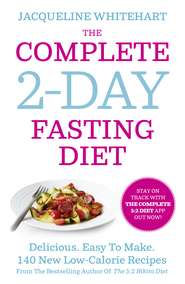По всем вопросам обращайтесь на: info@litportal.ru
(©) 2003-2024.
✖
The 28-Day Gut Health Plan: Lose weight and feel better from the inside
Автор
Год написания книги
2018
Настройки чтения
Размер шрифта
Высота строк
Поля
On average, and when eating without restrictions, how many days a week do you suffer from:
9. Stomach cramps:
10. Diarrhoea:
11. Constipation:
12. Bloating:
13. Acid reflux:
14. Excessive wind:
WORKING OUT YOUR SCORE
Add up the scores for every question (1–14) and use the chart below to check the current state of your gut health.
Gut-Health Total……………………………………………
My Gut-Health Score………………………………………
WHAT DOES YOUR GUT-HEALTH SCORE MEAN?
9–10 Severe
Disrupts your everyday life.
You may already be under the care of your doctor, and if not you should consider it.
The Gut-Health Plan may help you but you should also take medical advice. Be prepared for the programme to take longer than normal, and to find many food sensitivities.
7–8 Moderate to Severe
Although your gut health doesn’t bother you every day, you suffer more often than not and are always thinking about it.
The Gut-Health Plan should help you to get to grips with your gut-health. You are likely to find one or more food sensitivity.
3–6 Mild to Moderate
Your gut health doesn’t affect you every day. But it is slowly but surely getting worse. You might find that it gets worse during periods of stress and uncertainty and at inconvenient times, such as when you are on holiday.
The good news is that this programme can help reverse the flow and help you understand and improve your gut health.
1–2 Mild
You may suffer from occasional symptoms. You are unlikely to have any intolerances. If you feel that your gut health is getting worse, then this programme will get you back to optimum gut health.
THE 5 BIG TRIGGERS (#ulink_e58a62e7-dcc3-5cbb-9663-98644e134756)
During the 28-Day Gut-Health Plan we are concentrating on the five most common food triggers for gut health:
1.Lactose (Milk)
2.Red Meat
3.Nightshade family (tomatoes, (bell) peppers, chilli peppers, aubergine)
4.Gas-producing (gassy) Vegetables (onions, garlic, broccoli, beans)
5.Wheat
We are concentrating here on food intolerances as opposed to allergies.
An intolerance:
Develops over time
Gets worse as you get older
Doesn’t always affect you in the same way
Can allow you to still eat the food in smaller quantities
With food allergies, you are either born with them or develop them as a young child. The reaction to foods is intense with only a very small quantity. Your food allergy may have involved medical treatment of some kind, although there is no cure. If you have an allergy, it is very black and white. You know about it and are hopefully receiving medical support. For our purposes, being coeliac is definitely an allergy. If you have an allergy, you can still find support for other possible food intolerances in this book and hopefully find recipes that support your allergy and your lifestyle.
Remember that any food intolerances develop from an underlying gut-health problem. You can inherit gut-health problems or they can be caused by the foods you eat and the lifestyle you follow. This is why gut-health symptoms tend to worsen as you get older.
We start to mend the gut by first introducing probiotics. These will improve the bacterial balance. Foods will be digested better and are less likely to come into contact with the gut wall. Although probiotics will improve your entire gut, it is a slow process and doesn’t deal directly with any food intolerances you might have developed.
For this reason, in addition to the probiotics, we start the 28-Day Plan with a 7-Day Rest and Restore phase that removes the five common food triggers from your diet. By removing the intolerance (the food that your body considers most toxic), we can reduce the inflammation in the lining of the gut. It is only then that the gut can start to heal.
When the gut has started to heal and symptoms have reduced, we can then reintroduce trigger foods gradually and see what effects they have on YOUR body. The aim of the programme is not only to improve the health of your gut, but also to understand your own specific food intolerances so that you can learn to balance the foods you eat with the effect they have on your body.
We introduce food groups in a particular order, with the trickiest and most difficult triggers to diagnose coming last – gassy vegetables and wheat.
LACTOSE (MILK)
Lactose or milk sugar is a sugar found only in milk or milk products.
Milk vs Dairy
A common misconception, however, is that anything made from milk contains lactose. Which is why some people may be confused and eliminate all dairy from their diet.
Dairy does define all food made from milk. However, in ‘hard’ or solid dairy products such as butter or cheese all the lactose has been removed. If you think back to domestic science, or perhaps even the nursery rhyme, milk is split into curds and whey. Curds is the solid protein and fat and contains no lactose.
An even simpler definition is:
‘If you have to cut it with a knife, it’s safe.’









